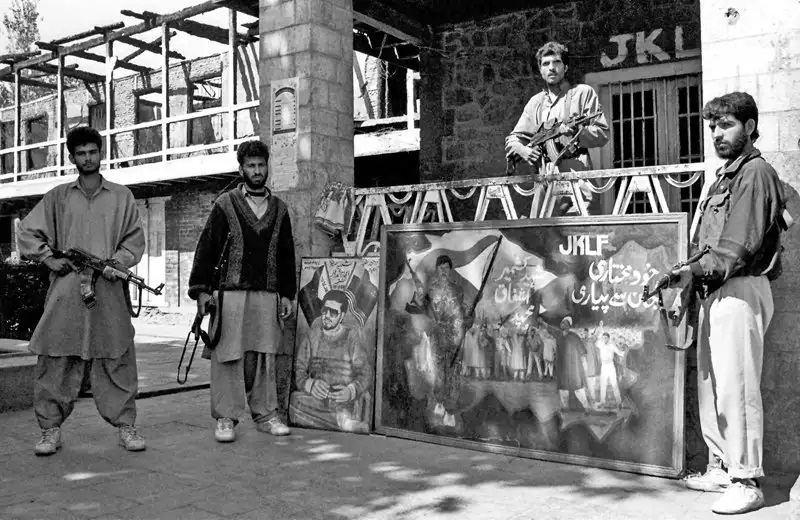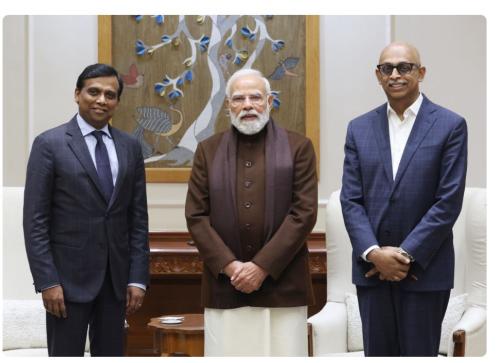AHMED ALI FAYYAZ New Delhi, March 20: The release of the biopic Kashmir Files has opened many wounds, not just related to the brutal ethnic cleansing of the Kashmiri Pandits, but also a string of other humiliations including at Hazratbal and Chrar-e-Sharif. The two shrines deeply revered by Kashmiri Muslims became hideouts for terrorists on three particular occasions in October 1993, May 1995 and March 1996 during PV Narasimha Rao's Congress leadership at the Centre. Jammu and Kashmir was under the President's rule and Gen (retd) KV Krishna was Governor. Out-of-bounds for security forces, the Hazratbal shrine, holding the holy relic of Prophet Mohammad since the beginning of the 18th century, became a meeting ground for militants in 1990. In 1993, they set their hideouts on the secured premises. The Border Security Force (BSF), followed by the Army, laid siege to the shrine-cum-mosque complex on 15 October 1993 after receiving reports that some militants had tampered with the locks of the sanctum sanctorum. Some 50-70-armed militants of the Jammu and Kashmir Liberation Front (JKLF), Operation Balakot and Al-jehad, got holed up. The standoff lasted for 32 days and ended with a safe passage to all the militants. Close to the Assembly elections in five States of the Hindi heartland, including Uttar Pradesh, Prime Minister Rao left everything to the discretion of Governor Krishna Rao with the direction that there shouldn't be any exchange of gunfire or bloodshed at the shrine premises. Multiple ego clashes in the highest echelons of the government, both in New Delhi and Srinagar, messed up the whole rescue operation to the militants' advantage. Minister of Home Affairs, SB Chavan, and Minister of State for Internal Security, Rajesh Pilot, who was Narasimha Rao's principal point man in Kashmir, didn't see eye to eye. In Srinagar, Krishna Rao didn't have a good bonhomie with the Army and his Security Advisor Gen (retd) Mehmood Ahmad Zaki. Krishna Rao wouldn't respond to anybody less than the PM. On at least two occasions, he is known to have ignored calls from the Union Home Secretary NN Vohra. Chief Secretary Sheikh Ghulam Rasool and Additional Chief Secretary Home, Mehmood-ur-Reman, were at daggers drawn. Divisional Commissioner Wajahat Habibullah had his own agenda and way of functioning. The relationship between Pilot and Krishna Rao had gone sour over the appointment of MN Sabharwal as J&K's DGP at the exit of BS Bedi. Pilot had got the name of KPS Gill, former DGP of Punjab, cleared as Bedi's successor from the PMO. Mainly for this reason, Pilot, who had built tremendous rapport in the valley, kept himself out. Afraid that a strong personality like Gill would undermine his office, Krishna Rao botched up Pilot's plan. Sabharwal took over on the day the siege was laid. With no clarity and direction to the bureaucracy and security forces, chaos and confusion ruled the State. Army Chief BC Joshi said: "We will tire them out and break their will". Corps commander S. Padmanabhan ruled out any safe passage to the militants. Chief Secretary Rasool conveyed to the Prime Minister's Office that he would resolve the crisis with the help of his Hurriyat friends. Habibullah began meeting with the militants and facilitating the supply of food and blankets to them all. With all the government mandarins pulling in different directions and the Corps Commanders giving orders to snap water and electricity to the shrine complex, the High Court Bar Association managed to get orders of providing 1200-calorie food and other essential commodities to the holed-up militants and civilians from the Supreme Court. Chief Engineers of Public Health Engineering and Power departments refused to implement the GOC's orders. It reduced Army's eOperation Psycho' to 'Operation Boomerang'! The militants had no-secret goodwill for Habibullah. Previously, they laid a cordon around his cavalcade during an official visit in Baramulla but left him unharmed. During his service in the IAS and his appointment as India's Chief Information Commissioner, Habibullah maintained an intimate liaison with the JKLF chief Yasin Malik. Later being CIC, he kept standing like a waiter and overlooked service of wazwan to hundreds of guests at Malik's waleema at Hyderpora, just furlongs away from the spot where he and his militants once allegedly gunned down four IAF personnel. The holed-up militants at Hazratbal put Governor's administration under pressure to the extent that they were also provided a telephone which they used to communicate their messages to the whole world. Foreign journalists interviewed the militants' leader and JKLF's 'military advisor' Idrees through the same medium. Even after Habibullah got critically injured in a road accident, the militants continued to dictate terms. After a month-long standoff, the militants received a letter from their leader through the IB and Habibullah advising them to lay down arms and come out. They were assured that they all would be released through a judicial process and none of them would be detained. "We have already gained as much as we could. You all have become heroes and your lives are very valuable to us", wrote their commander. Hurriyat Conference's two top leaders, Prof. Abdul Gani Bhat and Maulvi Abbas Ansari, met Chief Secretary Rasool almost daily at his official residence. Rasool wanted Mehmood-ur-Rehman out. Later Zaki resigned as Advisor to the Governor. This is how Pakistan floated a political support structure for the militants by the title of All Party Hurriyat Conference (APHC) and got the same introduced with international publicity. All the 60-odd militants were later set free and left free to return to their organisations. In February-March 1996, a group of over 30 terrorists of JKLF (Amanullah Khan group) established their headquarters at Green House, a building outside the Hazratbal shrine. There were instructions to Commandant of J&K Armed Police 14th battalion, Raja Aijaz Ali, against disturbing that particular group of the terrorists. However, the JKLF terrorists opened fire at the sentries, sparking an armed retaliation. Six terrorists and a policemen died. Soon after all the group terrorists rushed inside the shrine premises and the standoff continued for five days. Even after the Governor's administration managed to get the holed-up terrorists out through negotiations, another encounter took place at Green House. Almost all the 30 terrorists, including their dreaded chief 'General' Basharat Raza and political head Shabir Sidiquee, were killed in the two encounters. In 1994-95, Pakistani terrorists led by 'Major' Mast Gul used the shrine of Sheikh Nooruddin Noorani, as also its adjoining monastery and a mosque, at Chrar-e-Sharief, as their hideout for about 6 months. Troops finally laid siege to the whole premises and the congested township sitting on a mountain slope on 10 May 1995. In the ensuing encounter almost the whole township, including the shrine structures, were destroyed. Even as some militants were killed, many of them including Mast Gul managed to escape. Mast Gul later surfaced as a 'hero' in Pakistan.. (The content is being carried under an arrangement with indianarrative.com) --indianarrative
How blatant appeasement of Kashmiri terrorists during Congress rule led to humiliation at Hazratbal and Chrar-e-Sharief
- by Rinku
- March 20, 2022 2 minutes

How blatant appeasement of Kashmiri terrorists during Congress rule led to humiliation at Hazratbal and Chrar-e-Sharief.(photo:IN)










